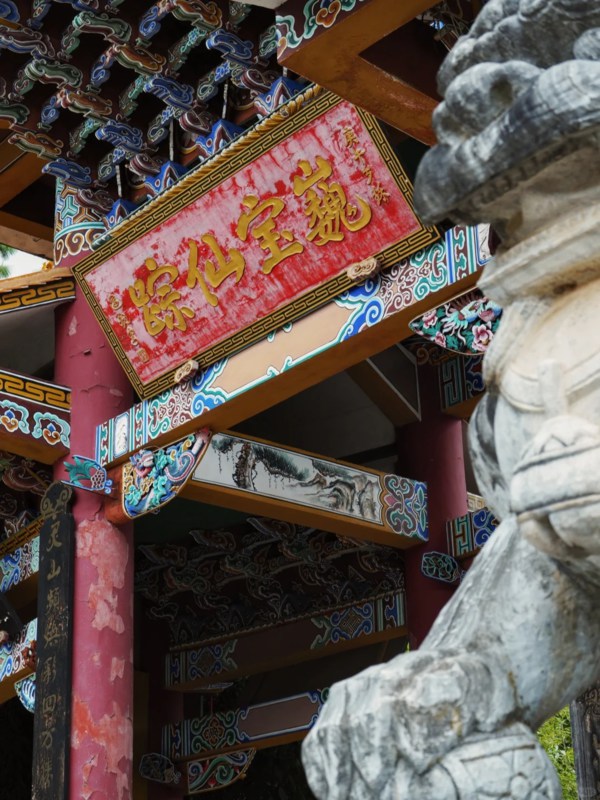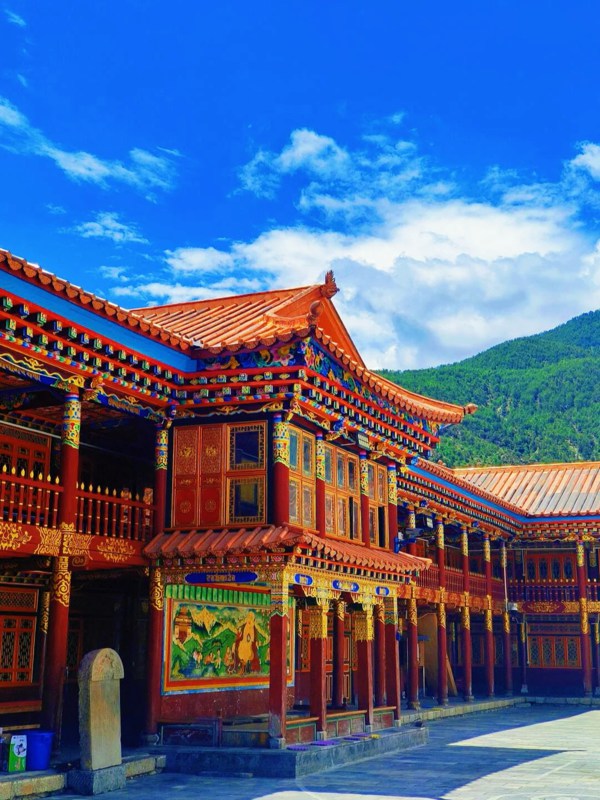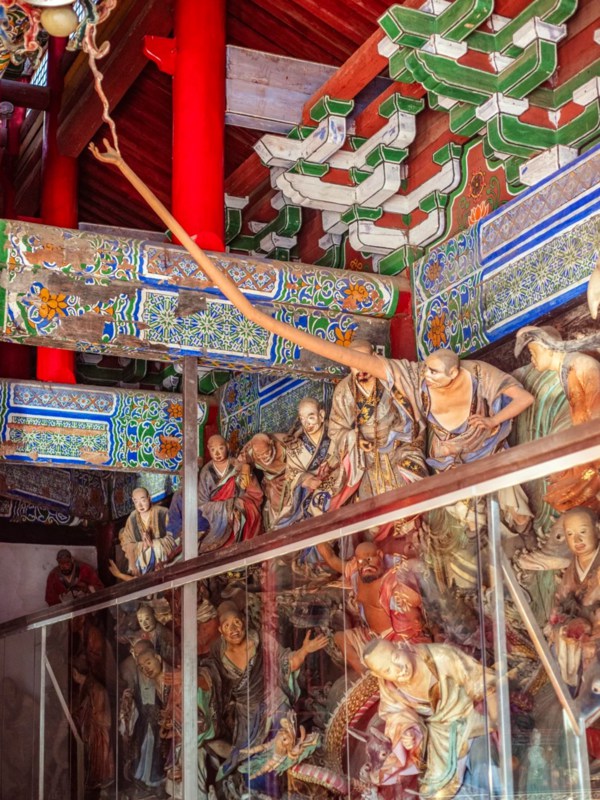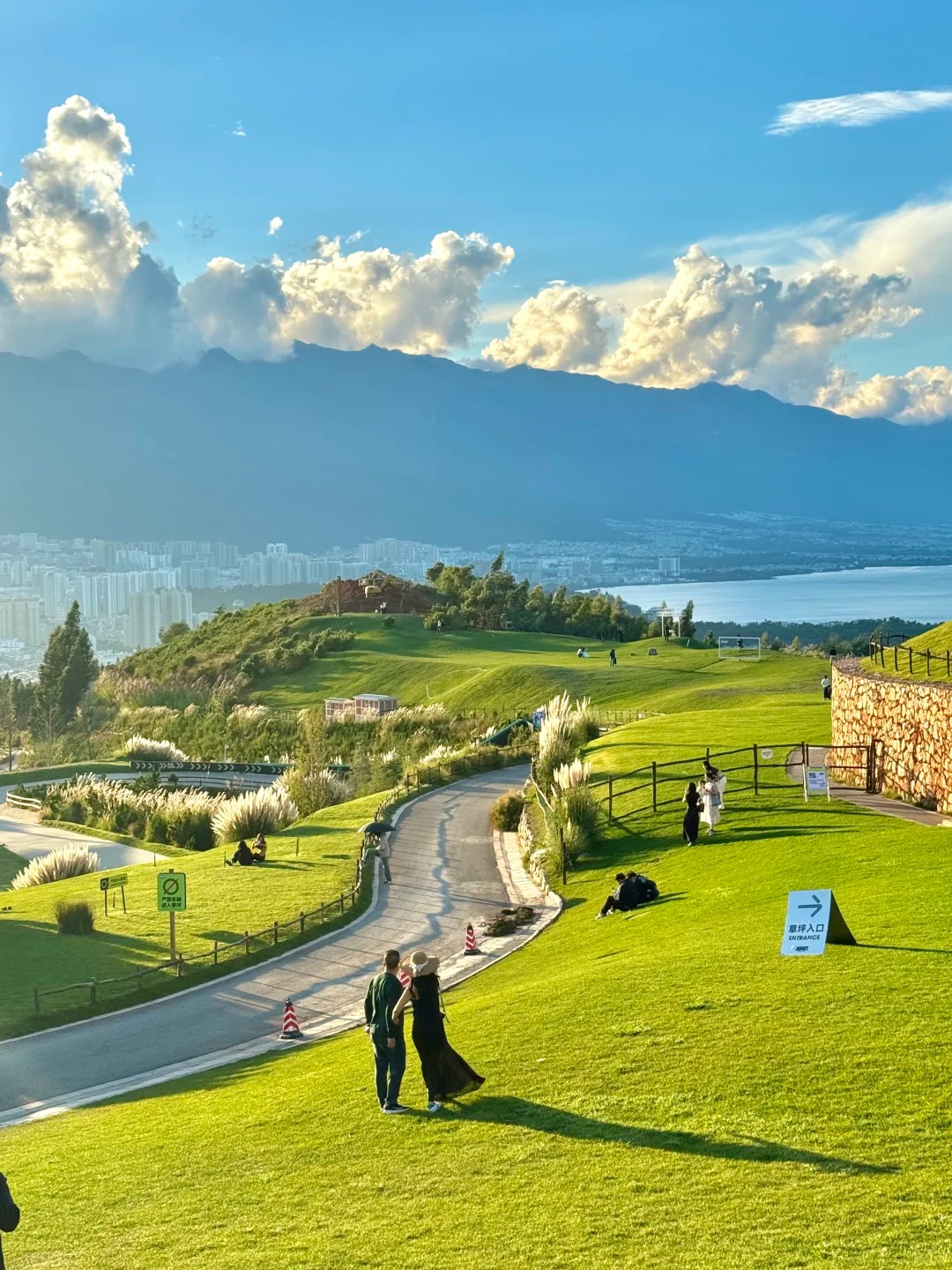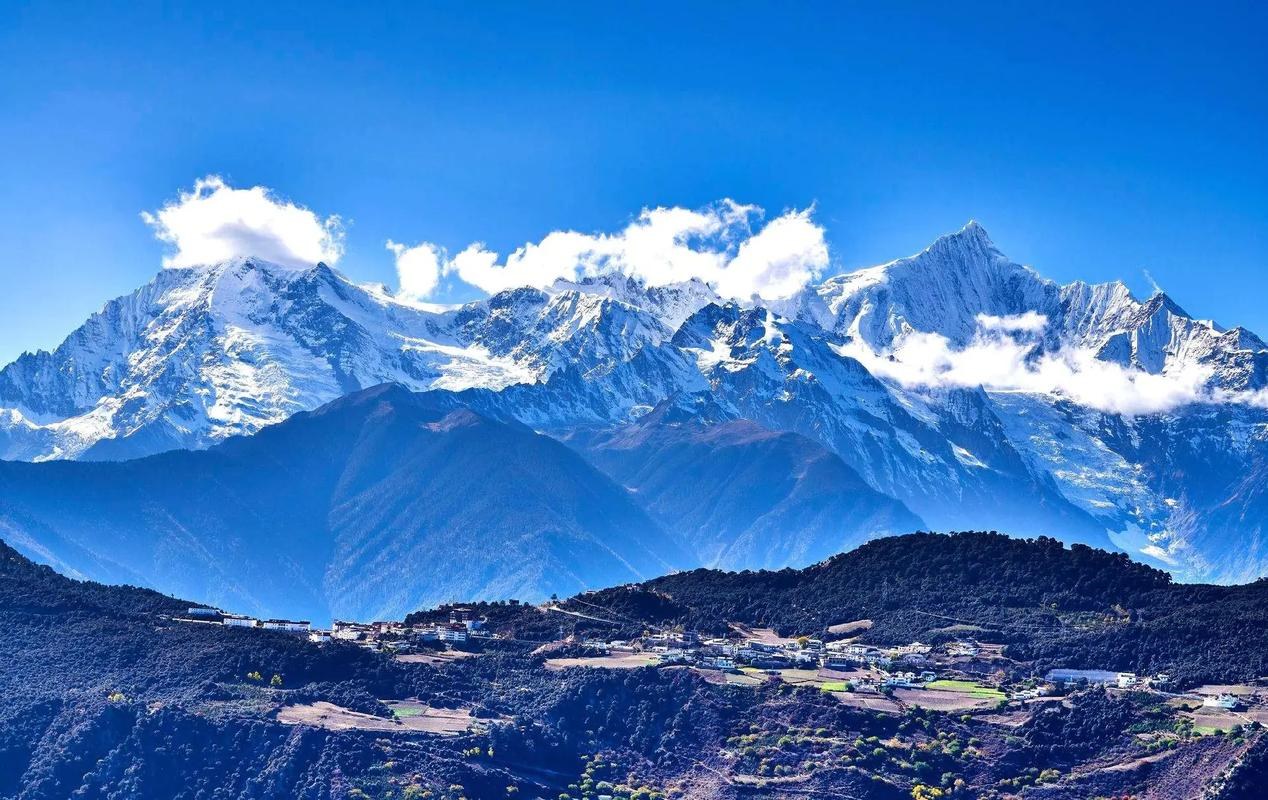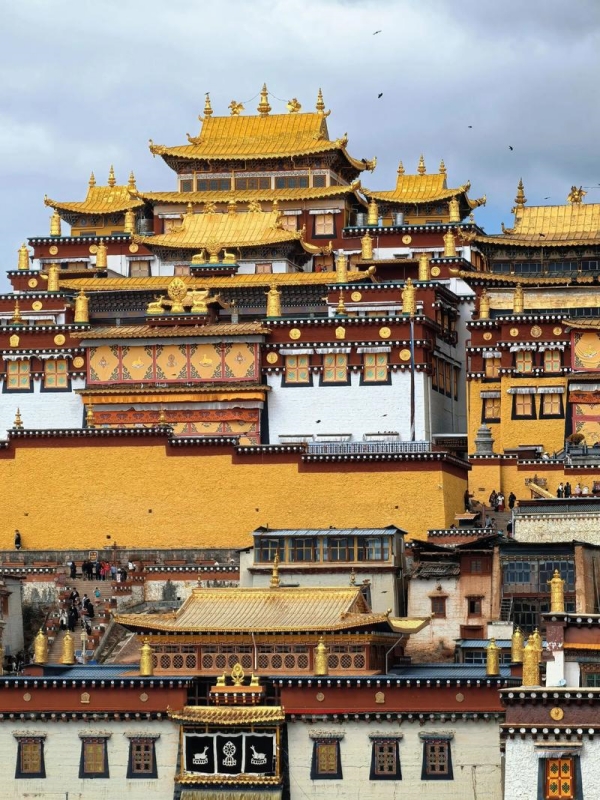
Famous Temples in Yunnan
When travelers search for the best temples, a handful of postcard-perfect names appear first—but Yunnan’s temple scene runs much deeper. Here three distinct religious traditions coexist: Tibetan Buddhism’s butter-lamp monasteries around Shangri-La, Dai Theravada stupas and novice schools in Xishuangbanna, and classic Han temple courtyards in Kunming and Dali. That mix creates sudden sensory shifts—juniper and yak-butter tea in a highland gompa, sandalwood incense in a lowland hall—and local devotion that feels unmanufactured. This guide highlights the famous temples in Yunnan worth your effort: the iconic, the intimate, and the off-the-beaten-track sites where real worship and quiet moments still happen.
1. Songzanlin Monastery – The "Little Potala Palace" That Takes Your Breath Away
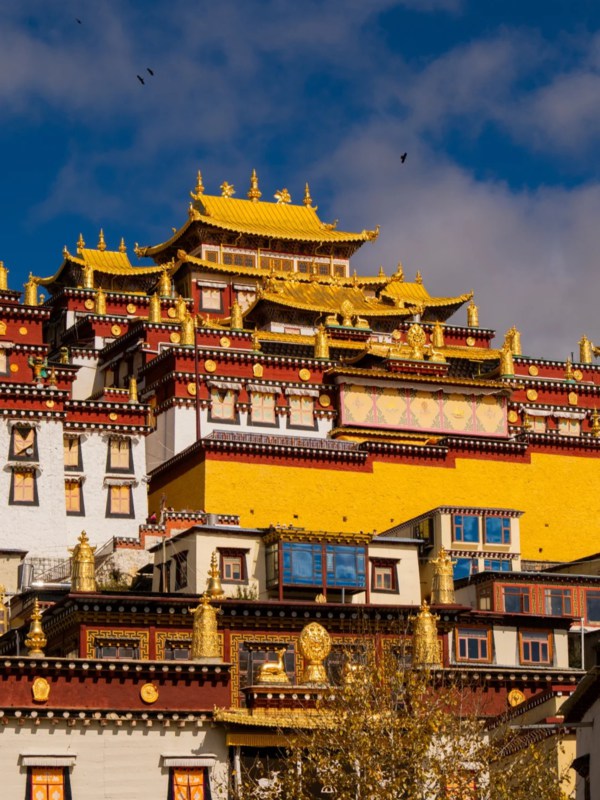
Songzanlin Monastery
The Songzanlin Monastery is at 3,380 meters, such that you will feel it first before you see it. I made the 150 stone steps pondering, this is not too bad only to have my lungs halfway up the steps to remind me that I was not in Kunming any more. The altitude of the songzanlin monastery is no laughing matter. Portable oxygen cans are sold by locals at the entrance, ¥20.
However when you have reached the top, the sight is so good that the shortness of breath is forgotten. The roofs were golden, one atop the other, the walls were white and falling down the hill, the prayer flags waving in the wind that smells of juniper. It is the biggest Tibetan Buddhist monastery within Yunnan. In their reviews, you can always see TripAdvisor says golden roofs stunning and they are not lying.
Best photo moment? Early morning of about 8 AM when Lamuyangcuo Lake is reflecting the whole complex. Touring groups are not yet there and you find monks performing morning rituals.Songzanlin monastery entrance fee is 75 Yuan and optional 15 yuan shuttle bus. Forget the shuttle, it is just a 10 minute flat walk and you will need that time to acclimatize anyhow. Tickets either on Ctrip or at the gate.
2. Yuantong Temple – Kunming's Ancient Heart (Where Locals Actually Pray)
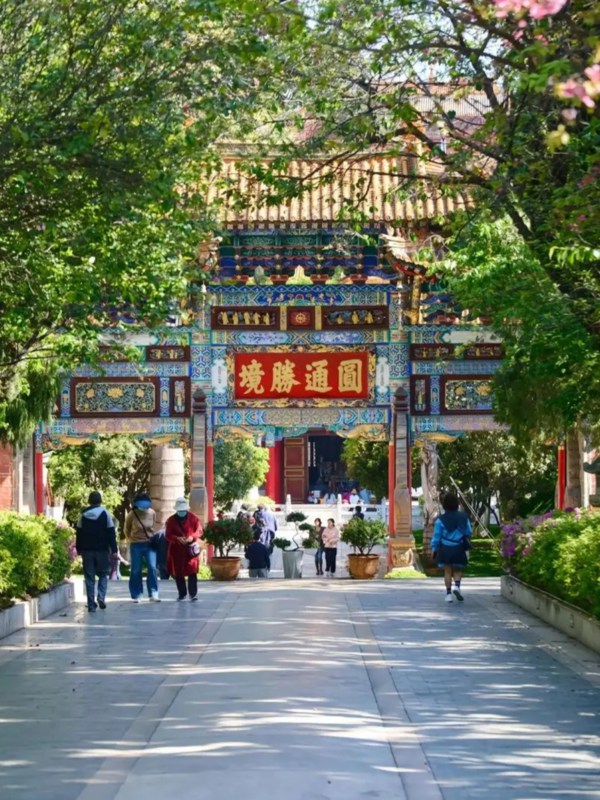
Yuantong Temple
The Yuantong Temple makes no effort to impress you. It has been in central Kunming 1,200 years long and it behaves like it. The buildings are placed in a natural depression and hence you do not climb up but you walk down which is not typical of Chinese temple construction.
The special thing about this is that locals do use it. I have seen old women kneeling on cushions on Sunday mornings and praying with real intensity. The principal hall is on an island in a pond, and linked by bridges of stone. The space of worship is surrounded by water and seemingly, it is a unique aspect in China. On the interior, there are two huge carved dragons, one blue, one yellow, round about pillars in the middle. Still sharp after 600 years, Ming Dynasty work. There are turtles and koi in the pond. It is strangely relaxing to watch them as smoke of incense drifts across the water.
The cost to enter is 15 Yuan, which is also the lowest in major temples in Yunnan. Sellers of incense at the entrance gate will be pushing ¥20-30 sticks. Shall I take heed of them--the temple is incensed at no cost. You can take Metro Line 2 to Yuantong Mountain Station.
3. Three Pagodas (Chongsheng Temple) – Dali's Iconic Postcard Perfect
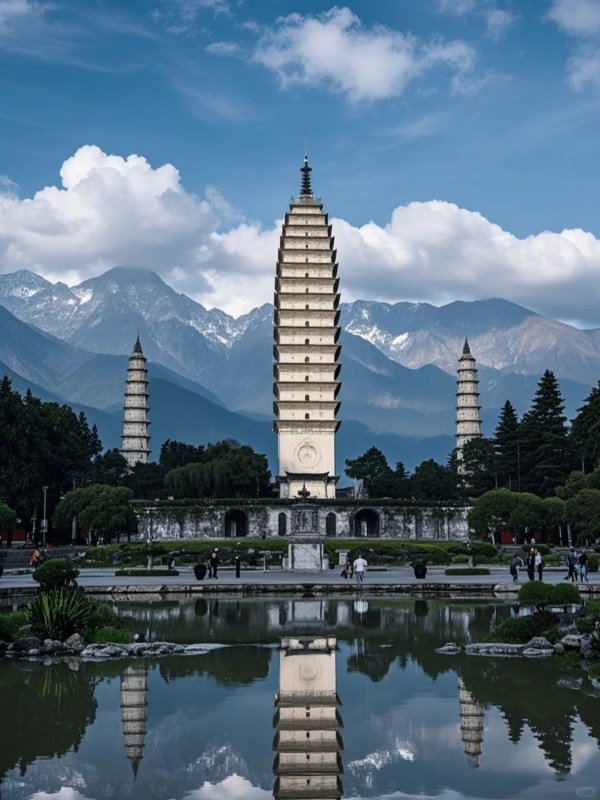
Three Pagodas
These three towers have withstood some 30 major earthquakes since the 9 th century. The central pagoda rises 69 meters and can be observed on the other side of Erhai Lake. They can not be missed in Dali marketing and are rightly deserved of the hype.
The money shot is the reflection pond. Between 5-6 PM when wind dies and water becomes glassy. I had observed a wedding couple doing their photo shoot there, with the photographer shouting instructions to them with tourists crowded in the background. Everybody desires the same angle. The Chongsheng Temple, which is rebuilt behind the pagodas, extends into the hillside. Burned during Qing Dynasty, however, it was later rebuilt in 2005 with several Halls, a massive bell of 871 AD, and viewing platforms overlooking Dali.
Entrance fee ¥75, pagoda and complete temple complex. Budget 2-3 hours. There are times when ctrip tickets will be slightly discounted. Do not go in the midday there are crowds 11 am to 2 pm and light is so harsh. Bus No. 4 of Dali Ancient Town (2) or walking (25 minutes).
4. Golden Temple (Jindian) – The Copper Marvel That Glows
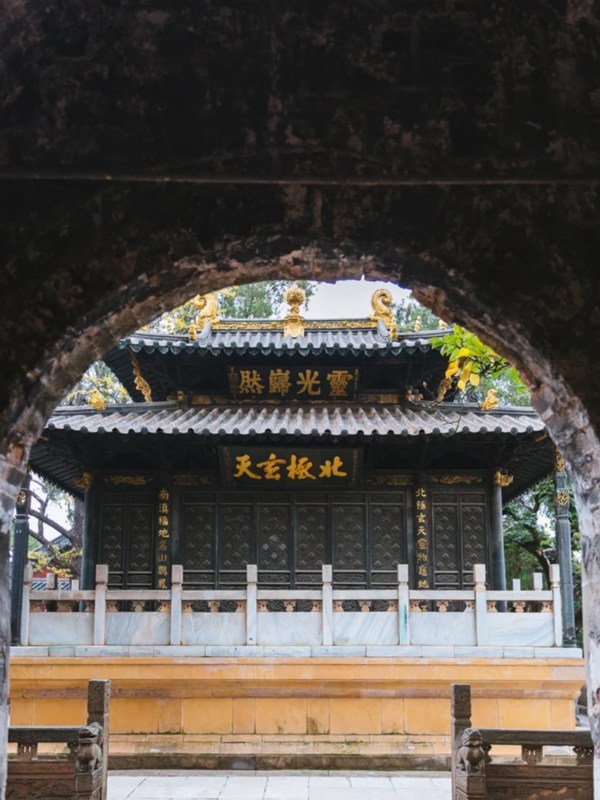
Golden Temple
The Golden temple's name tricks people. It is not even gold it is 250 tons of copper gilded with gold-copper alloy that has sun-catching qualities and looks like it is backlit. Whole edifice cast in 1602, of copper. The biggest extant copper temple in China, and it is a little surreal to stand in front of it. I had an experiment with the coin-toss game in the courtyard. Inside a water basin there is a sculpture of a brass fish--they are to drop coins in its mouth to bring good luck. Took me five attempts. The mouth of the fish is perhaps 3 cm in diameter.
February Visit the camellia tree near the temple that is 600 years old. Barked half petrified stem writhing into hundreds of red flowers. The timber seems lifeless here and there and then those exquisite flowers appear.
Entrance is ¥30. The location of Temple is Mingfeng Hill to the east of Kunming, not accessible on foot. Bus No. 10 or 71 takes 45-50 minutes (¥1). Taxi costs 80-100 but much more convenient in a situation when you are in hurry.
5. Jizu Mountain – For Serious Pilgrims (and Sunrise Chasers)
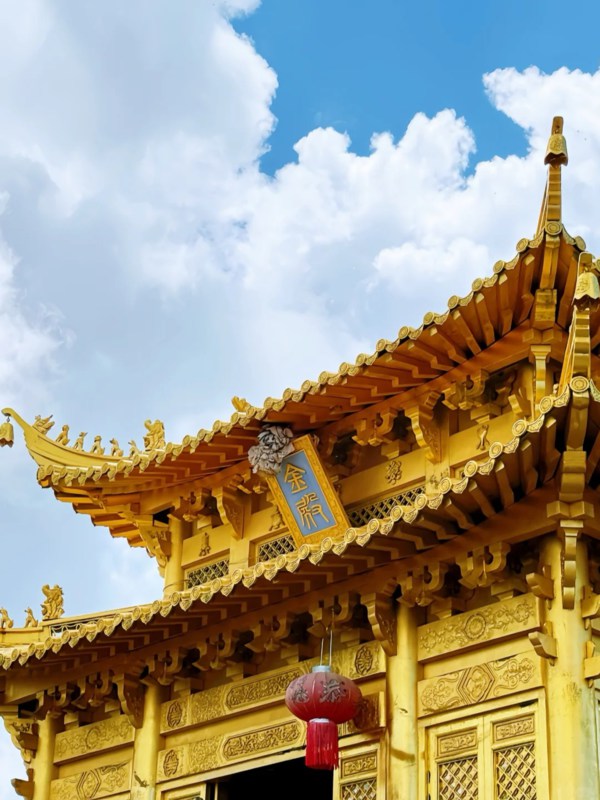
Jizu Mountain
The Jizu Mountain is a sacred Buddhist mountain in China and it acts like one. Not a casual temple visit. Either take either cable car up, or walk 2-3 hours up stone steps which are practically vertical in places. I went by a Tibetan couple who were performing three-step prostrations. Take 3 steps, get on knees, rest entire body on the ground, get up, repeat. They'd been at it for hours. Such a devotion leaves your sore calves ridiculous.
Human beings struggle to make it to the sunrise. With the right conditions you can see the Buddha light known as a halo effect of clouds at the top of Jinding Temple. Photographers stay the night at guesthouses in monasteries (¥80-150 per bed). The circumstances are severe, such as communal bathrooms, no heating and no meat dishes.
The entrance fee is 60 and a round trip on the cable car is 90. Buses from Dali take 2 hours (¥30). Exceedingly Yunnan out of the path than mainstream tourist circuit. The majority of them accompany it with a Dali trip.
6. Manfeilong Pagoda – Xishuangbanna's Bamboo Shoot Beauty

Manfeilong Pagoda
The Manfeilong Pagoda is not similar to the temples of the north. Uncompromising Dai Theravada Buddhism Nine white stupas like bamboo shoots with golden spires. Constructed in 1204 and it is said that Buddha left his footprint on a rock here. The footprint boulder is located in a pavilion that is located south of the offering pagoda.
The complex is located in jungle heat. March had already heated to 30o C. Pagodas are not hollow but solid constructions which, supposedly, enclosed relics at the time of their construction. It is the place where Dai boys are traditionally spent as novice monks--it is the way they are taught to read because monasteries are schools. April is the most popular month in Water Splashing Festival yet anticipates crowds. The temple grounds lead to a Dai village that has traditional stilt houses and homestay.
Admission is ¥10, strange to say the least. Location catch- 70 km southwest of Jinghong, 2-hour ride on a bus (¥20). Go half a day with Damenglong market. Private car runs ¥300-400 daily. Very little English description- carry translation applications.
7. Shibao Mountain Grottoes – The Hidden Gem for Art Lovers
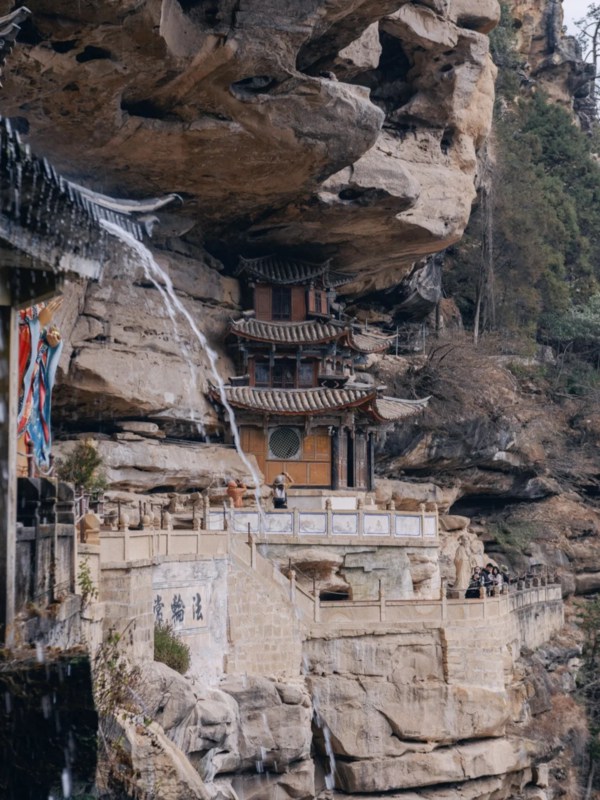
Shibao Mountain Grottoes
The Shibao Mountain does not compete on size or Instagram attractiveness. It is cliff carvings that are etched between Dali and Lijiang in sandstone and dated to Tang and Song periods. Art historians love it. Confused casual tourists do not always leave. The real piece, a life-size female figure, probably Guanyin, with detail giving the impression of softness in stone, is found in the Azhali grotto. Her face is not blank, her face is calm, folds of her robe fall naturally. A single sculpture but it made the entire journey worth it.
There are other carvings of musicians, domestic scenes, even chubby monks in nearly satirical pose. Sandstone permitted subtlety, fingers, jewelry design. Even some faces have been eroded by weathering and this makes them even more haunting. There is, in effect, no English signage. I got a guide hired at 150 Yen who could explain symbolism of Buddhism. Otherwise you are only looking at ancient carvings. Entrance costs ¥65. Pretty yunnan off the beaten track -110 km north Dali. Bus to Jianchuan County (2 hrs, 25 yuan) taxi (30 yuan). Most of the hotels outside in Shaxi Ancient Town. Budget half a day minimum.
Off the Beaten Track: 3 Hidden Temples Worth the Detour
- Weibaoshan Temple
- Dongzhulin Monastery
- Bamboo Temple
Dongzhulin Monastery (Near Deqin)
Dongzhulin is located about ten kilometers from Deqin town on the way to the Meili Snow Mountain. While smaller than Songzanlin, its location is quite dramatic—it's set on a cliff, looking down into the valley of the Mekong River below. There's only about fifty monks who live here now. I came on a Tuesday afternoon and had the main prayer hall almost completely to myself. It was just me and one of the old monks who was refilling the butter lamps.
You have to hire a car to get there from Deqin (roughly ¥150-200, round trip). There are no public buses that go this way. You can combine it with the Meili Snow Mountain for a day. The entrance is about ¥30 but sometimes they don't even charge anything at all when it's quiet.
Weishan Ancient Town Temples
Located south of Dali, Weishan is a town that most tourists will skip altogether. It has six or seven small temples scattered amid the old streets, none of which are especially famous individually. But the chance to walk between these temples through narrow lanes with Bai architecture feels more authentic than Dali Ancient Town's shiny, touristy temple.
The main attraction is the Weibaoshan Temple complex up in the mountain above the town. It's a Taoist temple instead of a Buddhist complex, with paths connecting multiple shrines through the pine forest. It's worth a half-day to walk the routes. There are buses from Dali for ¥25, which take about 90 minutes. The town has guesthouses that accept foreigners, it is worth double-checking that when you book.
Bamboo Temple (Qiongzhu Si) Near Kunming
Qiongzhu Temple is especially famous for its 500 Luohan sculptures each one uniquely and exaggeratedly carved with perhaps grotesque expressions. Some look angry, some peaceful, some mid-argument. The Qing Dynasty sculptor Li Guangxiu carved them over seven years, and the result is odd and great.
Qiongzhu Temple is 12 km northwest of Kunming. You can take bus C65 for ¥2, but it will take over an hour as it has many stops. A taxi will run ¥60-80. Entrance to the temple is ¥15. The Yunnan temple is still an active monastic temple with monks, so if you visit in the morning, you'll usually catch the ceremonies being performed, and you will find it a lot quieter than Yuantong even though it is a bit closer to the city.
When to Visit (And Which Month to Avoid Yunnan Temples)
Best Months: March-May & September-November
March through May hits the sweet spot for most famous temples in Yunnan. Temperatures sit around 15-25°C across the region, cherry blossoms bloom at Yuantong Temple, and those 600-year camellias at Golden Temple explode with color. If you want a clearer idea of how Yunnan looks during spring and what trips are worth planning, check out this seasonal guide here. The Bai people hold their March Fair in Dali during this window—temples get busier but you'll catch traditional ceremonies you won't see other times.
September to November might be even better. Fewer tour groups, stable weather, and Songzanlin Monastery looks absolutely stunning when autumn hits. The golden roofs against yellow-leaved trees and that clear plateau sky—photographers camp out for those shots. Plus you dodge the monsoon completely.
Festival timing can make or break a visit. Gedong Festival at Songzanlin happens on the 29th day of the 11th lunar month (usually late December). Masked dances, thousands of pilgrims, the whole spectacle. Water Splashing Festival in Xishuangbanna peaks mid-April. If you're hitting Manfeilong Pagoda, that's when to go.
Month to Avoid: June-August (Rainy Season Challenges)
When is the worst month to visit Yunnan? June to August is monsoon season, which can cause the mountain temples to be entirely shut down. I was in Dali in July, 2023, when there was a storm that came through. The roads to the Three Pagodas flooded for three hours and they even shut down the reflection pond area altogether. I literally just sat in a noodle shop waiting for the rain to stop.
The rain is usually not constant. It is often just a quick daily afternoon downpour, which usually saturates everything, and then disappears. It disrupts the touring of temples which is what many come to see. Hiking Jizu Mountain during the wet season can be exciting but totally iffy. The stone steps get wet and can turn slippery and then you can't see much because of the clouds.
An exception is Xishuangbanna because it still works well in the summer. By nature of being tropical then, the rain does not affect it as much. Manfeilong Pagoda is also open year-round although April is still the most culturally important time because of the Water Splashing Festival.
But if you don't like crowds, avoid traveling during Chinese New Year. The Spring Festival makes domestic tourism soar. Songzanlin gets so crowded. We've waited in line to enter for 90 minutes. Hotels triple the rates. Just don't.
FAQ About Famous Temples in Yunnan
Q: What makes Songzanlin Monastery special compared to other temples in Yunnan?
Songzanlin Monastery stands out for its massive scale, fortress-like architecture, and deep connection to Tibetan Buddhism. Often called the “Little Potala Palace,” it preserves traditional monastic layouts, golden roofs, and centuries-old scriptures. Compared with other famous temples in Yunnan, it offers a stronger immersion into Tibetan cultural life, with active prayer halls and resident monks. The surrounding highland scenery further adds to its unique spiritual atmosphere.
Q: Is Shangri-La in Tibet or China?
Shangri-La is in China, specifically in Yunnan Province’s Diqing Tibetan Autonomous Prefecture. The confusion comes from its Tibetan cultural identity—monasteries, language, customs, and high-altitude landscapes that resemble Tibet. Many visitors assume it is part of the Tibet Autonomous Region, but geographically it belongs to northwest Yunnan. Its strong Tibetan influence explains why travelers often associate it with Tibet despite its official administrative location.
Q: How much is the Songzanlin Monastery entrance fee?
The standard entrance fee for Songzanlin Monastery is 75 RMB, with an optional shuttle bus that adds a small extra charge. Compared with entrance fees for other famous temples in Yunnan, it is slightly higher due to its size, heritage status, and conservation needs. Tickets include access to the main prayer halls and central complex, making it a worthwhile cost for travelers interested in Tibetan Buddhist architecture.
Q: What is the altitude of Songzanlin Monastery? Will I get altitude sickness?
Songzanlin Monastery sits at around 3,380 meters, so mild altitude symptoms such as shortness of breath or headaches can occur. Most travelers adjust within a day. Staying hydrated, avoiding intense activity, and resting upon arrival help relieve discomfort. Based on common visitor experience, altitude sickness is manageable for healthy individuals. If symptoms worsen, descend to Shangri-La town, which is slightly lower and easier for acclimatization.
Q: Can I visit all famous temples in Yunnan in one trip?
Visiting all famous temples in Yunnan in a single trip is challenging because they are spread across Kunming, Dali, Lijiang, and Shangri-La. A comfortable itinerary usually takes 7–10 days. Travelers with limited time can prioritize a regional cluster—such as Lijiang’s Tibetan monasteries or Kunming’s historic temples. Selecting a few representative sites ensures deeper cultural experiences without rushing long-distance travel between cities.
Q: What should I wear when visiting Yunnan temples?
Dress modestly with covered shoulders and longer pants or skirts, especially when entering active prayer halls. Tibetan Buddhist monasteries may require warmer layers due to higher elevation and wind, while lowland temples around Kunming are milder. Comfortable shoes are useful for stairs and courtyards. Avoid hats inside halls, and bring a light jacket year-round. Practical, respectful clothing helps you blend in across Yunnan’s diverse temple environments.
Q: Are photography and videos allowed in Yunnan temples?
Photography is generally allowed in outdoor courtyards, architecture, and scenic viewpoints, but indoor prayer halls often prohibit shooting to protect murals and maintain spiritual respect. Some monks’ living areas or ritual spaces are strictly off-limits. When visiting famous temples in Yunnan, always check signs or ask staff before filming. Use quiet shutter modes, avoid blocking pathways, and never photograph individuals during active worship without permission.
Q: What’s the best way to get to Songzanlin Monastery from Shangri-La town?
The most convenient option is Bus No. 3, which runs regularly and offers the lowest cost. Taxis provide a faster and more direct ride, ideal for groups or cold-weather visits. It’s also possible to walk, taking 40–60 minutes depending on pace. Each option is affordable, but the bus offers the best value, while taxis give comfort and flexibility, especially for sunrise or early-morning monastery visits.
